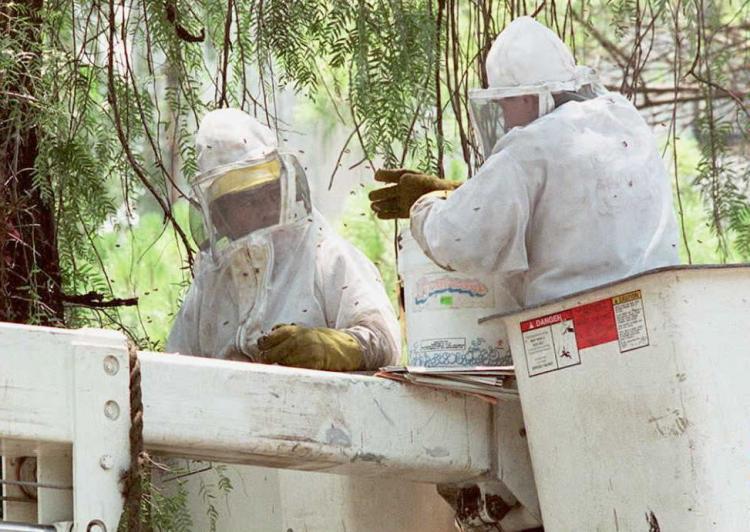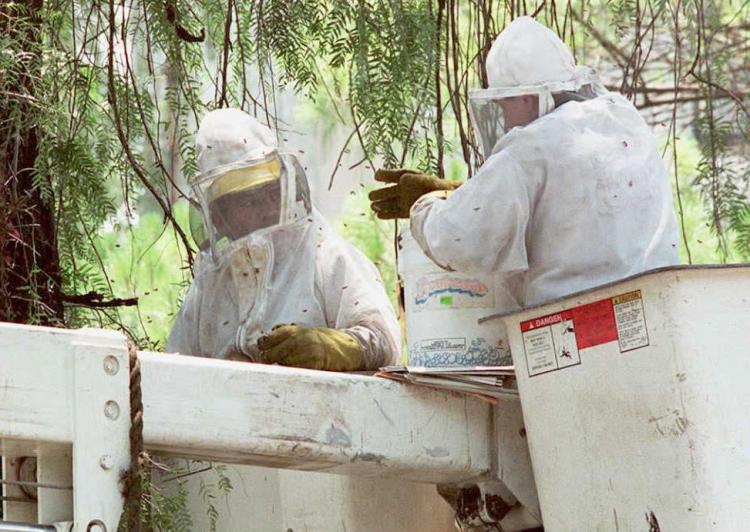Killer bees, or Africanized honey bees, are to blame for the death of a 73-year-old Georgia man, according to a statement by the US state’s Department of Agriculture on Thursday.
The man, who accidentally disturbed a colony of bees with his bulldozer, apparently was stung more than 100 times.
“This is the first record of Africanized honeybees in Georgia,” said Agriculture Commissioner Tommy Irvin in the statement.
The bees are dubbed “killer bees” due to their extremely defensive nature regarding their nest. Apart from their more “intense” stinging behavior, killer bees will attack at distances as far as 100 yards away from their nest, in contrast to 1-20 yards for European honey bees, according to a white paper on Africanized honey bees by Keith Delaplane, Professor of Entomology at the University of Georgia.
“Large numbers of them sometimes sting people and livestock with little provocation,” wrote Delaplane.
Killer bees and normal honey bees look the same with similar behavior. Like honey bees, the killer bee can only sting once and the venom is the same.
Killer bees are hybrids of African and European bees. They first hybridized in the 1950s in Brazil and then spread throughout most of Central and South America. Killer bees first came into the US via Texas in 1990 and have since spread to southern and western states like New Mexico, Arizona, California, Nevada, Utah, Oklahoma, Arkansas, Louisiana, Florida and now Georgia.
“The Georgia Department of Agriculture is going to continue its trapping and monitoring of bee swarms to try to find where any Africanized honeybees are,” said Commissioner Irvin in the statement. “We also want to educate people about what to do in case they encounter a colony of Africanized honeybees.
Irvin said that people need to be cautious around nests.
“Georgia beekeepers are our first and best line of defense against these invaders. They are the ones who will be able to monitor and detect any changes in bee activity,” Irvin added.
The man, who accidentally disturbed a colony of bees with his bulldozer, apparently was stung more than 100 times.
“This is the first record of Africanized honeybees in Georgia,” said Agriculture Commissioner Tommy Irvin in the statement.
The bees are dubbed “killer bees” due to their extremely defensive nature regarding their nest. Apart from their more “intense” stinging behavior, killer bees will attack at distances as far as 100 yards away from their nest, in contrast to 1-20 yards for European honey bees, according to a white paper on Africanized honey bees by Keith Delaplane, Professor of Entomology at the University of Georgia.
“Large numbers of them sometimes sting people and livestock with little provocation,” wrote Delaplane.
Killer bees and normal honey bees look the same with similar behavior. Like honey bees, the killer bee can only sting once and the venom is the same.
Killer bees are hybrids of African and European bees. They first hybridized in the 1950s in Brazil and then spread throughout most of Central and South America. Killer bees first came into the US via Texas in 1990 and have since spread to southern and western states like New Mexico, Arizona, California, Nevada, Utah, Oklahoma, Arkansas, Louisiana, Florida and now Georgia.
“The Georgia Department of Agriculture is going to continue its trapping and monitoring of bee swarms to try to find where any Africanized honeybees are,” said Commissioner Irvin in the statement. “We also want to educate people about what to do in case they encounter a colony of Africanized honeybees.
Irvin said that people need to be cautious around nests.
“Georgia beekeepers are our first and best line of defense against these invaders. They are the ones who will be able to monitor and detect any changes in bee activity,” Irvin added.





